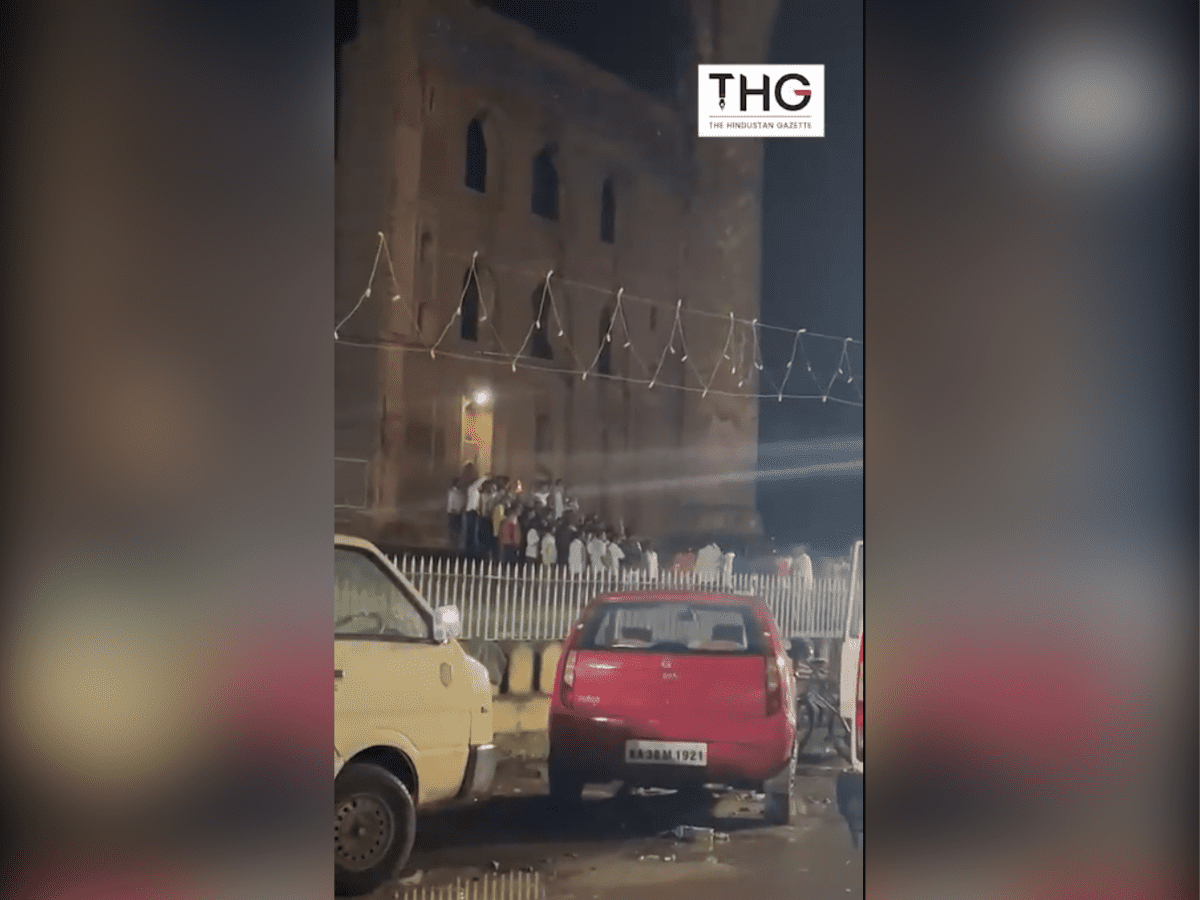
A Hindu mob forcefully performed pooja at Mahmud Gawan Madarsa mosque in Bidar in the wee hours of Thursday morning.
A video sourced from The Hindustan Gazette shows a Hindu group, who were taking a Devi procession on the occasion of the Dasara festival, forcefully breaking the lock.
Siasat.com spoke to a high court advocate Syed Talha Hashmi who said the incident occurred at around 1 am at night. “The Hindu mob was chanting slogans of Jai Shree Ram, Jai Hindu Dharam, Vande Mataram. They performed pooja on the mosque premises.”
Hashmi added that the Mahmud Gawan Madarsa mosque comes under the Archaeological Survey of India (ASI). “The video was made viral. In the afternoon, members from the Muslim community as well as the ASI went and filed a police complaint. An FIR has been registered,” Hashmi told Siasat.com.
According to Hashmi, one person has been taken into police custody.
Siasat.com tried to contact the Bidar Town police station as well as the Superintendent of Police but there was no response.
The history behind Mahmud Gawan
The Mahmud Gawan Madarsa/mosque in Bidar is a remnant of the Bahmani empire’s (1347-1518) glory days when Bidar was the capital (between 1424 to 1427 when it was shifted from Gulbarga) of the Deccan dynasty. In spite of its present condition, the remaining Persian tile work on the frontal facade gives us a glimpse of the past.
Mahmud Gawan was a powerful prime minister of the Bahmani empire, who held the position during the reign of Shamsuddin Muhammed III, who actually became king when he was 9-10 years old.
One of his major contributions is the madrasa (then a college/institution), of which the minaret alone rises to 100 feet, while the length of the edifice rises to a height of 205 feet. Half of the monument’s frontage was destroyed due to a gunpowder explosion in 1695/96.
The monument is a fine architectural example of the Deccan. Athanasius Nikitin, the well-known Russian traveler, wrote that Bidar was “the chief town of the whole of Mahomedan Hindustan” (Sherwani).
Mahmud Gawan was however known for his military capabilities, so much so that he was given the title of Lashkari (warrior) thanks to his successful campaigns.
And his death was nothing short of a political drama. Conspirators managed to forge a letter with his seal (by fraudulently obtaining it from his secretary) which essentially asked Purshottam of Odisha to invade the kingdom.
This was shown to the Bahmani Sultan, who was indignant and decided to end Gawan’s life. In spite of refuting it, the king would not listen and the man was beheaded in 1481.
However, when Shamsuddin later asked for an inventory of Gawan’s property, he was surprised to find that the former did not have much and realized his mistake.
The Sultan was stuck with remorse and sent the dead man’s coffin to Bidar with a great ceremony. Coincidentally, the king died a year later.
